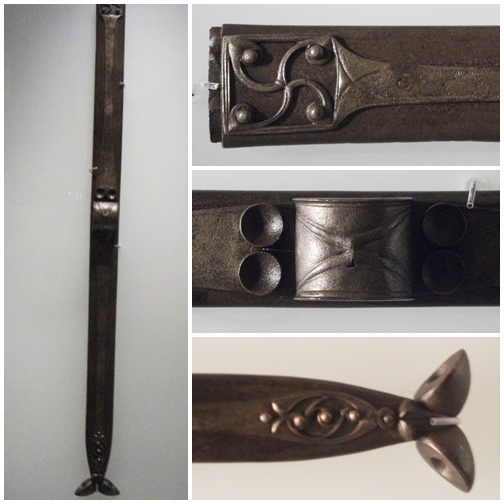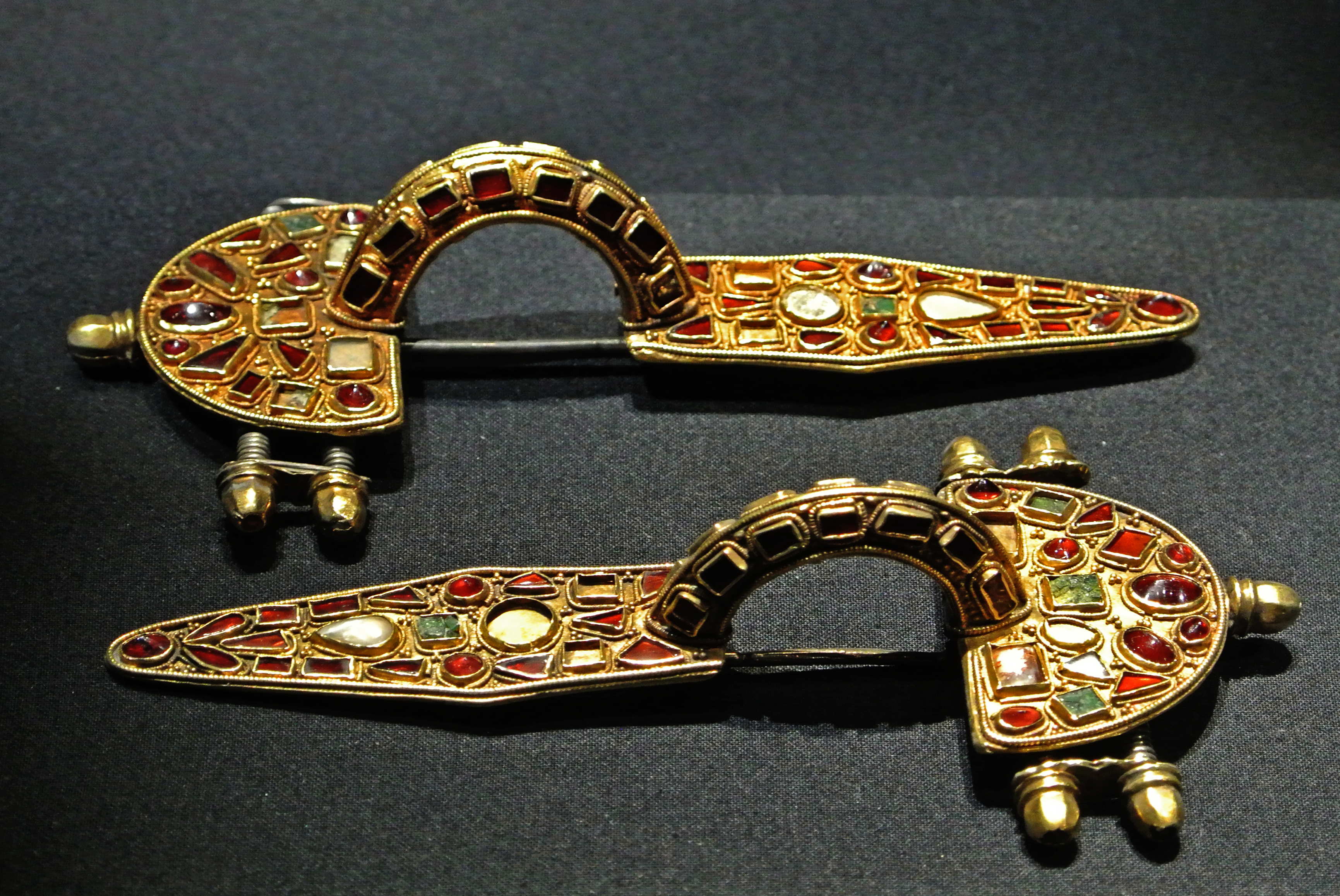|
Falbygden
Falbygden is a geographical area, centered at the town of Falköping in Västergötland, in southwestern Sweden, and covered mostly by farmland. Most of the area belongs to Falköping Municipality and the west part of Tidaholm Municipality. In mediaeval times the area belonged to the hundreds Frökind, Gudhem, Vartofta, and Vilske. It is known for its geology, flora and megalithic culture. Neolithic period in Falbygden File:Ekornavallen (Raä-nr Hornborga 31-1) gånggriften Girommen 3601.jpg, The Neolithic passage grave Girommen at Ekornavallen, Hornborga parish, Falbygden File:Varkumla15 ganggrift fr SV 2011-07-20.jpg, A passage grave in Vårkumla parish File:Kyrkerör (Raä-nr Falköping 28-1) gånggrift 4440.jpg, The passage grave Kyrkerör in Falköping File:Gånggriften Hjelmarsrör (RAÄ-nr Falköping 3-1) Utgrävning Ö schaktet 1994-05-XX Bild32.jpg, 1994 archaeological excavation of the passage grave Hjälmarsrör File:Tunnackig yxa fr Segerstads socken 2M16-674-1 u ... [...More Info...] [...Related Items...] OR: [Wikipedia] [Google] [Baidu] |
Falköping
Falköping is a locality and the seat of Falköping Municipality in Västra Götaland County, Sweden. It had 16,350 inhabitants in 2010. History The town of Falköping was first spoken of in the Icelandic ''Rimbegla'' (around 1100 A.D.), and is mentioned in the Westrogothic law. It was also an important site of pilgrimage due to its 12th-century church dedicated to Saint Olaf (''Sankt Olofs kyrka''). The town was heading for a shut-down during the 16th century and was even burnt to the ground by the Danish during the Northern Seven Years' War. However the town survived and was rebuilt. Falköping or Falbygden (when meaning the agricultural landscape in which Falköping is located) is widely known for its ancient remains of Stone Age, Bronze Age and Iron Age. The town is located between the two plateaus Mösseberg and Ålleberg. The location has been inhabited since the end of the ice age and cultivated by people for the last 6000 years. The oldest find is a form of meg ... [...More Info...] [...Related Items...] OR: [Wikipedia] [Google] [Baidu] |
Gudhem Abbey
Gudhem Abbey ( sv, Gudhems kloster) is the ruin of a nunnery which was in operation from 1152 to 1529. It is located in Gudhem outside Falköping in the Falbygden area in Västergötland, Sweden. It was initially part of the Benedictine and later Cistercian order. It is considered to have been one of the oldest convents in Sweden; after Vreta Abbey (1100) and Alvastra Abbey (1143). History Gudhem, a name signifying "Home of the Gods", was according to tradition a holy place of worship already before Christianity. According to the saga, one hundred images of the thunder god Thor were placed in Gudhem. According to a popular legend, Gudhem Abbey was founded in 1052 by Gunnhildr Sveinsdóttir, Queen Dowager of Sweden and Denmark, who returned to a life of penitence in her estate in Västergötland in Sweden, after her marriage with king Svein II of Denmark was annulled by the Church. In reality, however, the Abbey was founded exactly one hundred years later, in 1152. Charles VII o ... [...More Info...] [...Related Items...] OR: [Wikipedia] [Google] [Baidu] |
Gökhem Church
Gökhem Church ( sv, Gökhems kyrka) is a medieval Lutheran church built in the Romanesque style. Located some west of Falköping in Västra Götaland County, Sweden, it belongs to the Diocese of Skara. One of Sweden's oldest stone churches, it is noted for its well-preserved 15th-century frescos, possibly the work of Master Amund. History and architecture Gökhem Church is one of Sweden's oldest churches. Tree-ring dating of the church's beams indicates it was built around 1077. Built of sandstone and limestone, it originally consisted of a rounded apse, a chancel and a wider nave. A chapel and a sacristy were later added to the north of the chancel. While many of the windows have been enlarged, the one on the north side of the chancel has remained unaltered since the Middle Ages. The bell tower is said to have been built by Russian prisoners in the 1720s. [...More Info...] [...Related Items...] OR: [Wikipedia] [Google] [Baidu] |
Finnestorp
Finnestorp is an archaeological site in Västergötland, Sweden, where many objects from the Migration Period have been found. The site was discovered in 1902 and excavated in 2000–2004 and 2008–2012. It has been interpreted as a cult site where war booty was sacrificed. The more than 700 finds include weapons, horse gear and horses, mainly from the period 350–550 AD. History The first discoveries at Finnestorp, a location in Västergötland, Sweden, were made in 1902 during a road construction through a wetland area. Minor excavations were made in 1904, 1980 and 1992. More extensive excavations took place in 2000–2004 and 2008–2012. Description Finnestorp has been interpreted as a cult site where war booty was sacrificed. It has similarities to the site on Öland and to Migration Period war-booty sites in Denmark and northern Germany. As of 2009, more than 700 artefacts had been found throughout an area in Finnestorp that stretches . The most common finds are weap ... [...More Info...] [...Related Items...] OR: [Wikipedia] [Google] [Baidu] |
Scabbard
A scabbard is a sheath for holding a sword, knife, or other large blade. As well, rifles may be stored in a scabbard by horse riders. Military cavalry and cowboys had scabbards for their saddle ring carbine rifles and lever-action rifles on their horses for storage and protection. Scabbards have been made of many materials over the millennia, including leather, wood, and metals such as brass or steel. Most commonly, sword scabbards were worn suspended from a sword belt or shoulder belt called a baldric. Antiquity Wooden scabbards were typically covered in fabric or leather; the leather versions also usually bore metal fittings for added protection and carrying ease. Japanese blades typically have their sharp cutting edge protected by a wooden scabbard called a saya. Many scabbards, such as ones the Greeks and Romans used, were small and light. It was designed for holding the sword rather than protecting it. All-metal scabbards were popular items for a display of wealt ... [...More Info...] [...Related Items...] OR: [Wikipedia] [Google] [Baidu] |
Fibula (brooch)
A fibula (/ˈfɪbjʊlə/, plural fibulae /ˈfɪbjʊli/) is a brooch or pin for fastening garments, typically at the right shoulder. The fibula developed in a variety of shapes, but all were based on the safety-pin principle. Unlike most modern brooches, fibulae were not only decorative; they originally served a practical function: to fasten clothing for both sexes, such as dresses and cloaks. In English, "fibula" is not a word used for modern jewellery, but by archaeologists, who also use "brooch", especially for types other than the ancient "safety pin" types, and for types from the British Isles. There are hundreds of different types of fibulae. They are usually divided into families that are based upon historical periods, geography, and/or cultures. Fibulae are also divided into classes that are based upon their general forms. Fibulae replaced straight pins that were used to fasten clothing in the Neolithic period and the Bronze Age. In turn, fibulae were replaced as clo ... [...More Info...] [...Related Items...] OR: [Wikipedia] [Google] [Baidu] |
Ålleberg
Ålleberg () is a 330 m high mountain, or table, southeast of Falköping, Sweden. See also *Knights of Ålleberg According to Swedish Scandinavian folklore, legend, the Knights of Ålleberg are ghosts of twelve knights who died in a 1389 battle. The legend is an example of the king asleep in mountain motif in folklore. Legend The legend concerns knights w ... References Mountains of Sweden Landforms of Västra Götaland County {{VästraGötaland-geo-stub ... [...More Info...] [...Related Items...] OR: [Wikipedia] [Google] [Baidu] |
Migration Period
The Migration Period was a period in European history marked by large-scale migrations that saw the fall of the Western Roman Empire and subsequent settlement of its former territories by various tribes, and the establishment of the post-Roman kingdoms. The term refers to the important role played by the migration, invasion, and settlement of various tribes, notably the Franks, Goths, Alemanni, Alans, Huns, early Slavs, Pannonian Avars, Magyars, and Bulgars within or into the former Western Empire and Eastern Europe. The period is traditionally taken to have begun in AD 375 (possibly as early as 300) and ended in 568. Various factors contributed to this phenomenon of migration and invasion, and their role and significance are still widely discussed. Historians differ as to the dates for the beginning and ending of the Migration Period. The beginning of the period is widely regarded as the invasion of Europe by the Huns from Asia in about 375 and the ending with the co ... [...More Info...] [...Related Items...] OR: [Wikipedia] [Google] [Baidu] |
Gerum Cape
Gerum is a populated area, a socken (not to be confused with parish), on the Swedish island of Gotland. It comprises the same area as the administrative Gerum District, established on 1January 2016. Geography Gerum is situated in the south central part of Gotland. The medieval Gerum Church is located in the socken. , Gerum Church belongs to Gerum parish in Fardhems pastorat. In the south part of Gerum is the Sandarve Kulle nature reserve. The reserve was established in 1984, and comprises a large limestone cliff rising about over the surrounding landscape. Its highest point is at an elevation of . References External links *Objects from Gerum at the Digital Museumby Nordic Museum The Nordic Museum ( sv, Nordiska museet) is a museum located on Djurgården, an island in central Stockholm, Sweden, dedicated to the cultural history and ethnography of Sweden from the early modern period (in Swedish history, it is said t ... Populated places in Gotland County< ... [...More Info...] [...Related Items...] OR: [Wikipedia] [Google] [Baidu] |
Flint Axe
A flint axe was a Flint tool used during prehistoric times to perform a variety of tasks. These were at first just a cut piece of flint stone used as a hand axe but later wooden handles were attached to these axe heads. The stone exhibits a glass-like fracture similar to obsidian, and can be knapped to form large blades. The offcuts were sharp enough to be used a small flint knives, while the larger parts of a knapped nodule could be polished to form an axe-head. They competed with other hard rocks such as greenstone, which were produced at Langdale in the British Lake District and got larger as working continued. They tend to be larger and heavier than the simple axes, and are sometimes known as axe-hammers. There are many different types of flint axes. A specific one that appeared during the Early Stone Age was the core axe. This is an unpolished flint axe that is roughly hewn. The cutting edge is usually the widest part and has a pointed butt. Flake axes are created from the ... [...More Info...] [...Related Items...] OR: [Wikipedia] [Google] [Baidu] |
Ekornavallen
Ekornavallen is an ancient burial ground in the Falköping Municipality in Sweden. It contains a variety of ancient monuments dating from the Stone, Bronze and Iron Ages. Overview The Ekornavallen burial ground is located 15 km (9 miles) north of the city of Falköping. It contains four passage graves and a gallery grave from the Neolithic period, as well as cairns, stone circles, twelve standing stones, eight round stone settings and one triangular stone setting all dating from the Bronze and Iron Ages. It is estimated that the field was used over a six to seven thousand-year period. Girommen passage grave The largest, and best known, of the Neolithic passage graves at Ekornavallen is one called the "Girommen" which according to early writers means the giant oven. It consists of sandstone slabs, but the mound which once covered the grave is entirely gone. Between the lower passage and the chamber proper lies a very large and thick slab, the "Key stone", resting on the passa ... [...More Info...] [...Related Items...] OR: [Wikipedia] [Google] [Baidu] |


